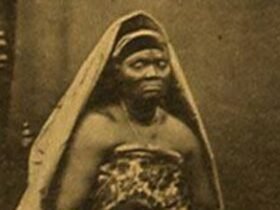No products in the cart.

The history of Onitsha is said to have begun with the migration of its people from the Benin Empire towards the end of the early part of the 16th century as a result of a wave of unrest, war, and displacement unleashed by the jihad from North Africa.
According to oral history, it was during their passage through the outskirts of Ile-Ife that they acquired the name Onitsha, a corruption of Orisha-Udo. Another version has it that their migration to the East of the Niger has to do with a misunderstanding that arose between the Onitsha family and Oba Esigie (1404-1550), following the slighting of their shrine, Udo, by the Oba.
Onitsha and Benin
It was customary for a newly installed Oba to pay homage to all important shrines in the Benin Kingdom by slaughtering a cow in the shrines’ enclave. But Oba Esigie is said to have refused to do this at the Onitsha people’s Udo Shrine, hence the quarrel and the migration down towards the River Niger area and across it.

The immigrant settlers from Benin were said to have been helped by the Igalas to cross the river to settle in Onitsha in the 16th century, which was originally called Ado N’Idu.
Following the abolition of slavery in the early 19th century, trade in palm kernels and other cash crops boomed around this river port.
The Arrival of the British to Onitsha
In 1857, British traders in palm oil established a permanent station in the city, and Christian missionaries soon followed, headed by a Yoruba Bishop, Samuel Ajayi Crowther and an Igbo Reverend, John Taylor.
Onitsha became part of the British protectorate in 1884 which as a result made the British colonial government and Christian missionaries penetrate most of Igboland, setting up their administration, schools and churches through the river port at Onitsha.
Immigrants from the hinterland were drawn to the emerging boom town as did the British traders who settled there and coordinated the palm oil and cash crops trade.
Even to this day, the white colonial style of buildings such as you see in Lagos, can be seen existing, side by side, with the new buildings, on these streets.
In 1965, the Asaba-Onitsha bridge was built and opened in January 1966 by Prime Minister Sir Abubakar Tafawa Balewa. The bridge runs across the River Niger to replace the ferry crossing. Today, plans are underway to build the Second Niger Bridge.
Watch Video
Onitsha is made up of three groups of people and this has been expounded more in the video below.
We always have more stories to tell, so make sure you are subscribed to our YouTube Channel and have pressed the bell button for interesting historical videos. You can also follow us on all our social media handles and don’t hesitate to as well share this article with your friends.
You can also get A Carnage Before Dawn, a historical account of Nigeria’s first coup d’état. E-book here. Paperback here. And on Amazon Kindle and Amazon Paperback.
Leave a Reply
You must be logged in to post a comment.








Leave a Reply
View Comments